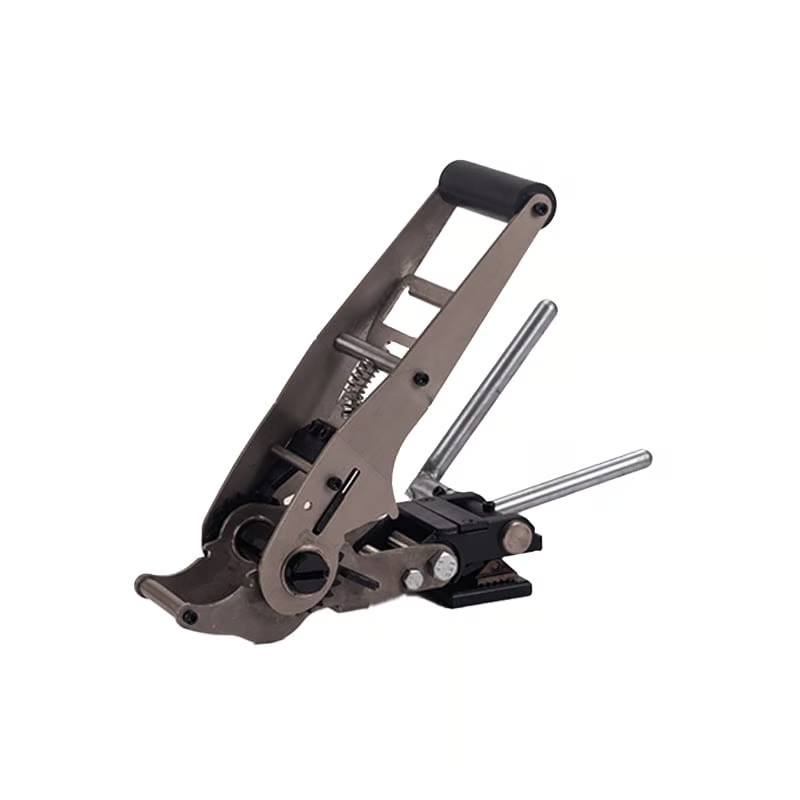Heavy Duty Ratchet Tensioner For Lashing Belt: All You Need to Know
Securing cargo is important during transport and the right equipment is essential for proper cargo securement. One such tool is the heavy-duty ratchet tensioner, a device used to tighten lashing belts and keep cargo securely in place. In this article, we'll take a closer look at this equipment and its benefits.
The Purpose of Heavy Duty Ratchet Tensioner
The heavy-duty ratchet tensioner is a versatile tool that is used to easily and efficiently secure cargo to a truck or trailer. The tool is used to tighten the lashing belt and hold the cargo in place during transportation. It can handle up to 5 tonnes of weight and is made from durable materials like steel and iron.
Benefits of Heavy Duty Ratchet Tensioner
The heavy-duty ratchet tensioner has many benefits. For example, it is easy to use and can be quickly and efficiently tightened with minimal effort. Furthermore, it is made from reliable and durable materials, ensuring that it will last for years. The tool is also very versatile as it can be used for a variety of trucking and transportation needs, making it a worthwhile investment for any business.
Types of Heavy Duty Ratchet Tensioner
There are different types of heavy-duty ratchet tensioner available in the market, including the lever ratchet tensioner and the ratchet buckle tensioner. Each has its own unique features and benefits making them ideal for different applications. The lever ratchet tensioner is easy to use, and the ratchet buckle tensioner is a great choice for larger and heavier cargo.
How to Use Heavy Duty Ratchet Tensioner
The heavy-duty ratchet tensioner is a straightforward tool that is easy to use. First, wrap the lashing belt around the cargo and fasten it tightly. Next, place the ratchet tensioner over the belt and pull it tight. Slowly turn the handle of the ratchet tensioner to increase the tension, and you're done.
Safety Tips When Using Heavy Duty Ratchet Tensioner
While the heavy-duty ratchet tensioner is easy to use and efficient, safety is still important when using it. Avoid using it for applications beyond its capacity and always wear gloves when tensioning the ratchet. In addition, be sure to inspect the tool regularly for any signs of wear and tear, and replace it if necessary to avoid any potential damage.
Quality and Durability
The heavy-duty ratchet tensioner is built to last and is made from high quality, durable materials. These materials are designed to withstand the pressures of heavy-duty usage, ensuring that your cargo is safely secured during transportation. Investing in a high-quality heavy-duty ratchet tensioner is a smart move as it will save you time and money in the long run.
Maintenance and Care
Proper maintenance and care of the heavy-duty ratchet tensioner will prolong its lifespan and ensure it functions properly. Regularly inspect it for any signs of damage or wear, and clean it thoroughly after each use. Store it in a dry and clean place to prevent rust, and lubricate it as needed to prevent any sticking or binding of the handle and other moving parts.
Best Practices
To ensure the best results, follow some best practices when using the heavy-duty ratchet tensioner. For example, always use the tool as instructed and avoid over-tightening the belt. Inspect the tool and the lashing belt before each use to ensure that they are in good condition and fit for purpose. Finally, always follow the relevant safety regulations and guidelines to ensure that your cargo is securely tied down during transportation.
Conclusion
The heavy-duty ratchet tensioner is an essential tool for securing cargo during transportation. Its durability, versatility, and ease of use make it a valuable investment for any business that regularly transports heavy cargo. To ensure the safety of yourself, your cargo, and others on the road, follow the safety guidelines and best practices for using the heavy-duty ratchet tensioner.

